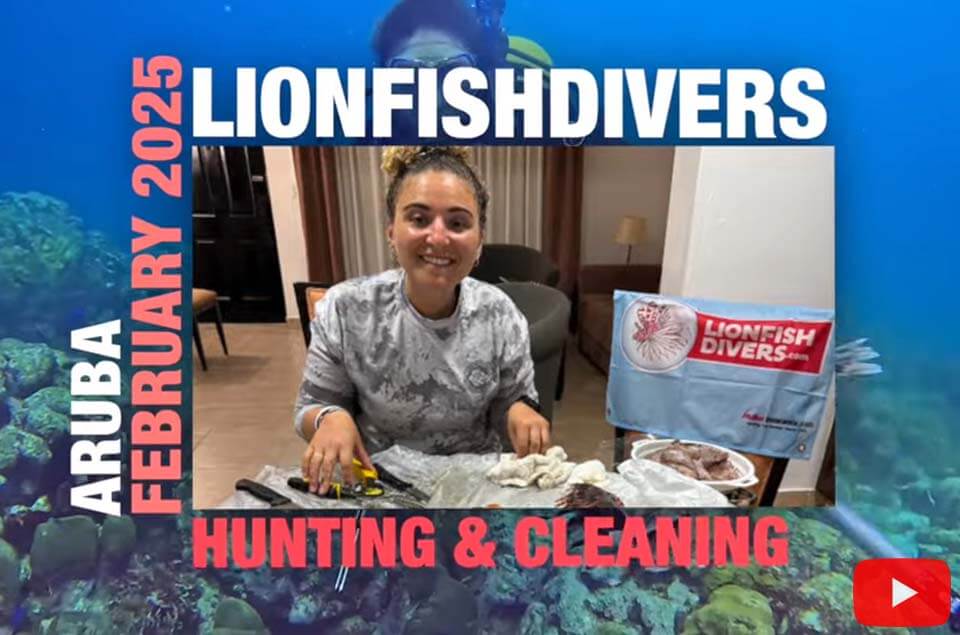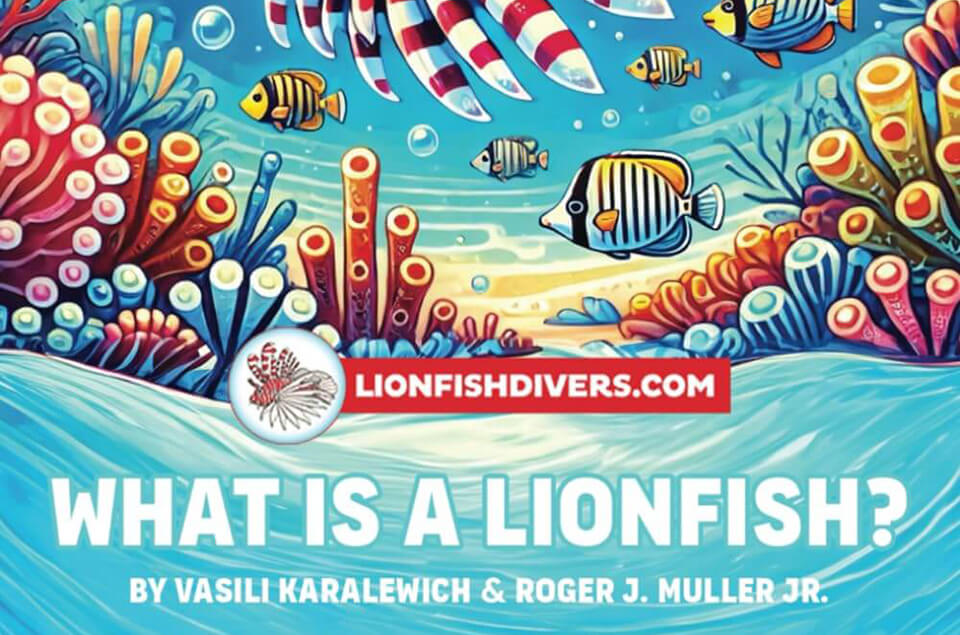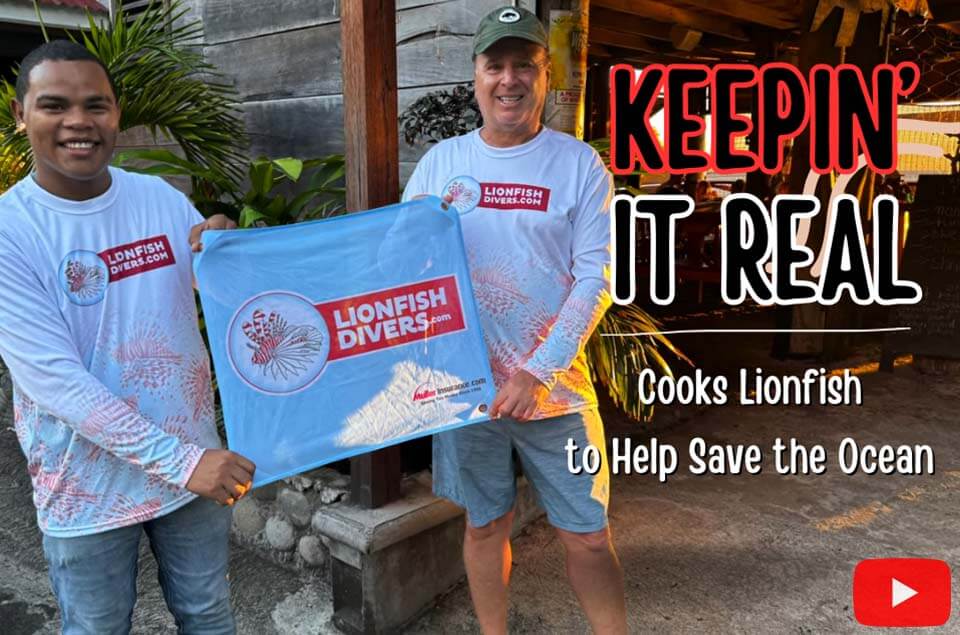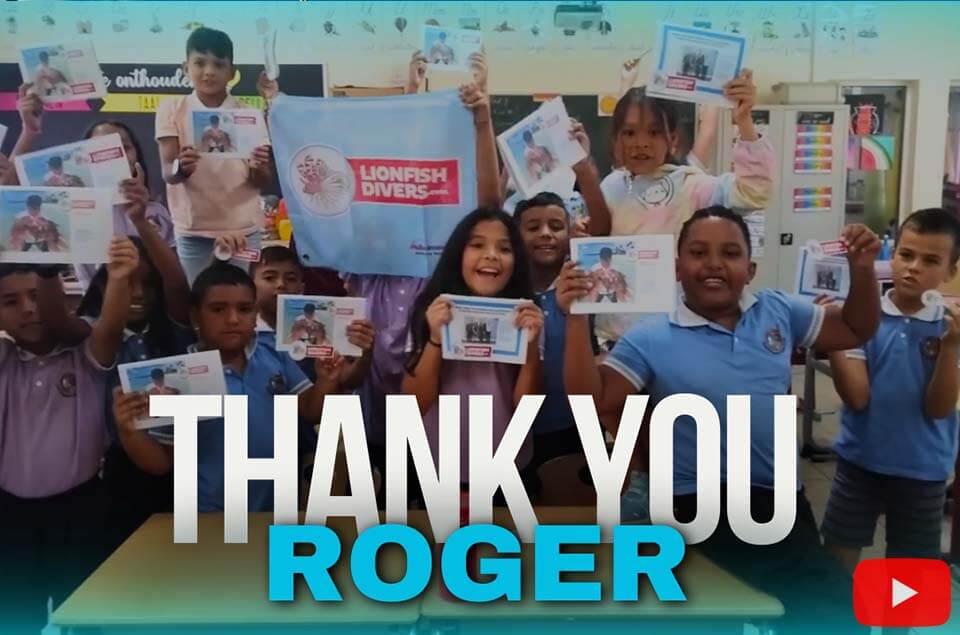Teaching 5th Graders About Lionfish at Scol Primario Kudawecha, Aruba
On February 17, 2025, I had the incredible opportunity to visit Scol Primario Kudawecha in Aruba and teach a class of 25 enthusiastic fifth graders about one of the ocean’s most beautiful yet destructive invaders, the lionfish. My friend Joanne Figaroa, a dedicated teacher’s assistant to Mr. Dwyane, whose son was in the class that day, arranged the visit.
A Familiar Face and a Warm Welcome
As I stepped into the classroom, I was greeted by excited students and a familiar face, Marli Moorhead. I recently went diving with Marli, her father Lukas (one of Aruba’s top lionfish hunters), and their friend Gia. Seeing Marli among the students was a fantastic surprise and instantly made me feel at home.
Confronting Fear with Knowledge
Early in the lesson, I noticed many students feared lionfish, which is understandable given their sharp spines and exotic appearance. I immediately reassured them: “You don’t have to be scared. Lionfish won’t chase you when you are in the water.”
This became a perfect opportunity to explain the difference between venomous and poisonous. I told them that lionfish are venomous, meaning their spines can sting you if touched, but they are not poisonous, and their meat is perfectly safe. In fact, it’s delicious!
Anatomy & Awareness
We discussed the anatomy of the lionfish, focusing on its 18 venomous spines. I explained that once the spines are carefully removed, the fish can be cleaned and prepared just like any other seafood. It was amazing to see the students’ fear slowly turn into curiosity and excitement as they learned more.
A Real-Life Lionfish in the Classroom
The highlight of the lesson was bringing in a real large lionfish I had speared just the day before. For safety, I clipped the bottom spines and trimmed the top spines so the students could touch the fish without fear. None of them had felt a lionfish before, and their reactions were priceless. Their favorite part? Poking the lionfish’s eye! I encouraged them to go home and proudly tell their families they had touched a real lionfish, something not many people get to do.
Key Lionfish Facts the Students Learned:
- Origin: Lionfish come from the Indo-Pacific.
- Invasion: They were introduced to the Atlantic and Caribbean with no natural predators.
- Impact: They eat native reef fish and disrupt the local ecosystem.
- Reproduction: A single lionfish can lay up to 30,000 eggs every few days.
- Control: Divers and spearfishers play a vital role in removing them, and many restaurants serve lionfish as a delicacy.
- Safety: Avoid the spines, but they are not dangerous if handled correctly.
Sharing the Message Through Books and Keepsakes
To wrap up the session, I gave each student a copy of What is a Lionfish? a comic and coloring book co-authored by Vasili Karalewich and me. The book teaches kids about lionfish in a fun and engaging way. The students were thrilled to receive their copies and immediately began flipping through the pages.
👉 You can buy a copy here for $12.99: “What is a Lionfish? ” on Amazon: https://www.amazon.com/What-Lionfish-All-About-LionfishDivers-com/dp/B0DPNKL2VK
Each child also received a LionfishDivers.com sticker and flag to take home as a reminder of their experience.
Raising Awareness Beyond the Classroom
I also shared photos of two lionfish awareness signs located in Saventa, on the road from the airport toward Baby Beach. These signs help raise awareness of the invasive species and the importance of taking action. While there is a two-year-old sign on a bus stop sidewalk in front of the Hilton, its message is still strong. You can learn more about lionfish and our efforts to control their population here at LionfishDivers.com.
Final Reflections
This classroom visit reminded me of how powerfully education can change perceptions. By the end of our hour, the students were no longer scared, they were engaged, curious, and proud to be part of the solution. It was gratifying to watch them touch the lionfish for the first time, ask insightful questions, and take home their books and flags. I’m hopeful that experiences like these will inspire the next generation of ocean protectors!





